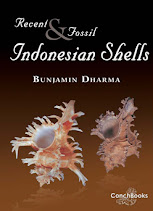Divers from Blue Water Ventures of Key West said they found the sealed lead box, measuring 3.5 inches by 5.5 inches, along with a gold bar, eight gold chains and hundreds of other artifacts earlier this week. They were apparently buried beneath the ocean floor in approximately 18 feet of water about 40 miles west of Key West.
"There are several thousand pearls starting from an eighth of an inch to three-quarters of an inch," said Duncan Mathewson, marine archaeologist and partner in Blue Water Ventures. "We have no idea exactly how many, because we haven't counted them yet."
James Sinclair, archaeologist and conservator consulting with Mel Fisher's Treasures, Blue Water's joint-venture partners, said the pearls are very rare because of their antiquity and condition.
"Pearls don't normally survive in the ocean very well once they've lost the protection of the oyster that makes them," Sinclair said. "In this instance, we had a lead box and the silt that had sifted into the box from the site of the Margarita, which preserved the pearls in a fairly pristine state."
An initial cache of treasure and artifacts from the Santa Margarita was discovered in 1980 by pioneering shipwreck salvor Mel Fisher. The pearls will be conserved, documented and photographed in an archaeological laboratory above the Mel Fisher Maritime Museum in Key West.
"Until they're properly cleaned and conserved we don't know their value, but it would seem they would be worth upwards of a million dollars," Mathewson said.




